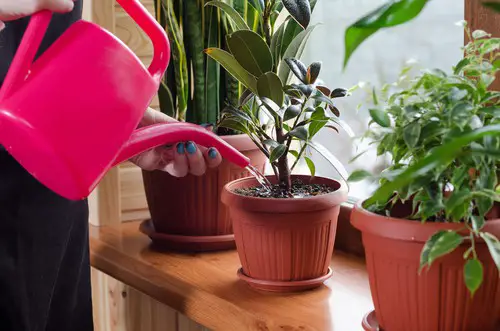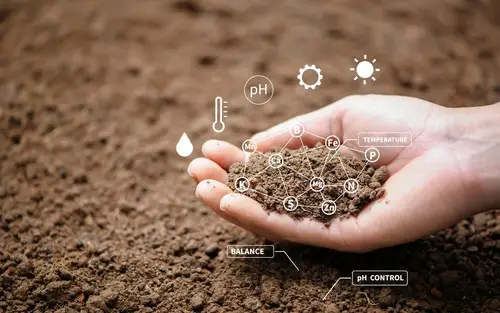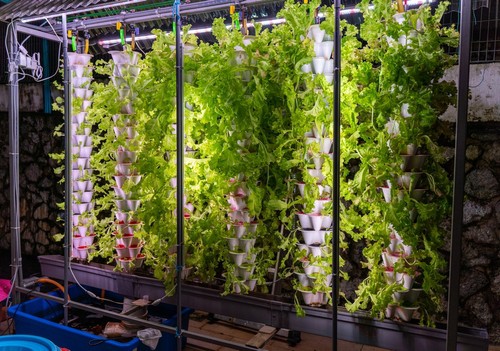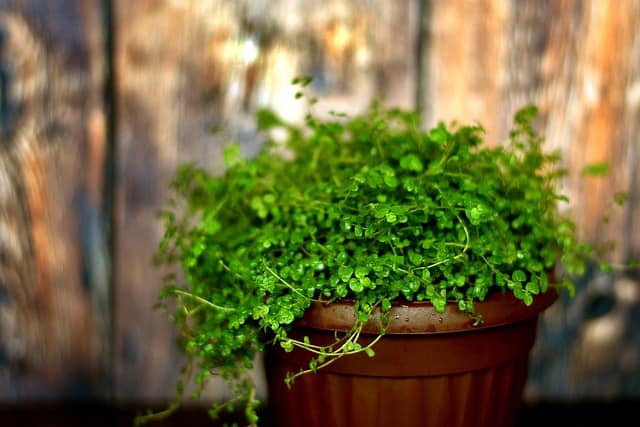Baby tears plant is a popular indoor plant known for its delicate, lush green leaves. However, if you notice that your baby tears plant turning brown, it could be a sign of an underlying issue. Brown leaves on a baby tears plant can be caused by a variety of factors including overwatering, underwatering, poor lighting, and temperature fluctuations.
To understand why your baby tears plant is turning brown, it’s important to understand the ideal growth conditions for this plant. Baby tears plant requires bright, indirect light and a consistently moist soil.
Overwatering can cause root rot and lead to brown leaves, while underwatering can cause the plant to dry out and also result in brown leaves. Additionally, baby tears plant is sensitive to temperature fluctuations and can develop brown leaves if exposed to hot or cold drafts.
In this article, we will explore the common causes of brown leaves on baby tears plant and provide tips on how to care for this delicate plant.
We will cover topics such as ideal growth conditions, watering and feeding, potting and propagation, identifying and addressing common problems, caring for baby tears in different settings, fertilization and nutrient requirements, additional tips and tricks, and frequently asked questions.
Key Takeaways
- Brown leaves on a baby tears plant can be caused by overwatering, underwatering, poor lighting, and temperature fluctuations.
- Baby tears plant requires bright, indirect light and a consistently moist soil.
- To care for a baby tears plant, it’s important to maintain ideal growth conditions, avoid overwatering and underwatering, and protect the plant from temperature fluctuations.
You might also like:
Understanding Baby Tears Plant

Baby tears plant, also known as Soleirolia soleirolii or mind-your-own-business, is a herbaceous perennial that is native to the Mediterranean. It belongs to the nettle family and is known for its delicate, small leaves that resemble tiny teardrops. This plant is a popular choice for indoor gardening due to its low maintenance and beautiful appearance.
Baby tears plant is a mat-forming plant that grows up to 2-4 inches in height and spreads up to 12 inches wide. It is a slow-growing plant that prefers moist soil and indirect light. However, it is important to note that this plant is sensitive to dry air and overwatering, which can cause its leaves to turn brown and crispy.
There are different types of baby tears plant, including dwarf baby tears, which is a popular choice for aquariums and terrariums due to its ability to grow underwater. Dwarf baby tears, also known as Hemianthus callitrichoides, is an annual plant that grows up to 1 inch in height and is characterized by its bright green color and tiny leaves.
Ideal Growth Conditions
Baby’s tears plants are a popular choice for indoor gardening due to their delicate, lush green leaves. However, these plants can be sensitive to changes in their environment, which can cause the leaves to turn brown. To prevent this from happening, it is important to provide the ideal growth conditions for the plant.
1. Temperature
Baby tears plants thrive in temperatures between 60°F and 75°F. Keep the plant away from drafts or sudden temperature changes, as this can cause stress and damage to the leaves.
2. Humidity
High humidity levels are essential for the growth of baby’s tears plants. These plants prefer humidity levels between 50% and 70%. If the air in your home is dry, consider using a humidifier or misting the plant regularly to keep the leaves moist.
3. Soil
Baby’s tears plants require moist, nutrient-rich soil to thrive. Use a well-draining soil mix that contains peat moss to ensure adequate moisture retention. Avoid over watering the plant, as this can lead to root rot and other issues.
4. Light
Baby’s tears plants prefer bright, indirect light. Direct sunlight can scorch the leaves, so it is best to keep the plant in a location that receives filtered or indirect light. If the plant is not receiving enough light, the leaves may turn brown and fall off.
By providing the ideal growth conditions for your baby’s tears plant, you can ensure that it remains healthy and vibrant. Keep an eye on the plant and make adjustments as needed to ensure that it continues to thrive.
Watering and Feeding

Proper watering and feeding are essential for maintaining the health of a Baby’s Tears plant. This section will cover the best practices for watering and feeding your plant.
1. Watering
Baby’s Tears plants require consistent moisture to thrive. It is important to keep the soil evenly moist, but not waterlogged. Overwatering can cause root rot, which can be fatal to the plant.
To avoid overwatering, it is recommended to water the plant as soon as you notice wilting. This may happen more frequently during the summer months when the plant is actively growing. When watering, make sure to water the soil, not the leaves, as this can lead to fungal diseases.
It is also important to ensure proper water flow. If the plant is in a pot, make sure it has adequate drainage holes to allow excess water to escape. If the plant is in a terrarium or other enclosed container, make sure to monitor the moisture levels closely to avoid overwatering.
2. Feeding
Baby’s Tears plants benefit from regular feeding during the growing season. A well-balanced fertilizer can be applied at half the recommended strength once a month during spring and summer. It is best to use a water-soluble fertilizer to monitor and control the strength and regularity of feeding to avoid over-fertilization and yellow leaves.
In addition to fertilizer, Baby’s Tears plants can benefit from occasional misting or a humidifier to maintain a consistent humidity level. This can help prevent the leaves from turning brown due to dry air.
3. Underwatering
Underwatering can also cause the leaves of a Baby’s Tears plant to turn brown. If the plant is not receiving enough water, the leaves may become dry and crispy. To remedy this, water the plant thoroughly and monitor the soil moisture levels closely to prevent future underwatering.
Potting and Propagation

Baby tears plants are relatively easy to propagate, making it an excellent choice for beginner gardeners. Propagation can be done by cuttings or division.
When potting baby tears plants, it’s essential to choose a pot that has good drainage. The potting soil should be well-draining and rich in organic matter. A mixture of peat moss, perlite, and vermiculite can be an excellent choice for potting soil. These materials will help to retain moisture while ensuring good drainage.
Propagation of baby tears plants can be done through stem cuttings or division. Stem cuttings can be taken at any time of the year, but it’s best to take them during the growing season.
The stem cuttings should be about 2-3 inches long and have a few leaves attached. Once the cuttings are taken, they should be planted in a pot with well-draining soil and kept moist until they root.
Division is another method of propagation that can be used for baby tears plants. To divide a plant, gently remove it from the pot and separate the roots into smaller sections. Each section should have a few stems and leaves attached. Once the plant is divided, it can be repotted into a larger pot with fresh potting soil.
When repotting baby tears plants, it’s essential to use a pot that is slightly larger than the current one. The potting soil should be well-draining and rich in organic matter. A mixture of peat moss, perlite, and vermiculite can be an excellent choice for potting soil. These materials will help to retain moisture while ensuring good drainage.
Baby Tears Plant Turning Brown – 4 Common Problems
The Baby’s Tears plant can be a bit finicky and prone to several problems. Here are some of the most common issues that can cause the plant to turn brown and wilt:
1.Overwatering and Root Rot
Overwatering is one of the most common problems that can lead to root rot in Baby’s Tears plants. When the soil is overly wet, the roots can’t get enough oxygen, which leads to root rot and stunted growth.
Symptoms of root rot include yellowing leaves, wilting, and stunted growth. To prevent root rot, ensure that the soil is well-draining and allow the soil to dry out between watering. If you suspect root rot, remove the affected plant from its pot and discard the infected soil. Trim away any affected roots and repot the plant in fresh soil.
2. Drought and Underwatering
On the other hand, Baby’s Tears plants can also suffer from drought and underwatering. During the winter months, the plant can go dormant and require less water. In general, the Baby’s Tears plant prefers moist soil, but it’s important not to overwater it.
The plant is drought-tolerant, so it can recover from underwatering. If the leaves are turning brown and crispy, it may be a sign that the plant is not getting enough water.
3. Iron Deficiency

Iron deficiency can also cause the leaves of the Baby’s Tears plant to turn brown. This is usually due to a lack of iron in the soil. To address this issue, fertilize the plant with a fertilizer that contains iron. Be sure to follow the instructions on the fertilizer package, as over-fertilizing can also cause problems.
4. Pruning
Pruning can help the Baby’s Tears plant to recover from brown leaves and stunted growth. When pruning, be sure to use clean and sharp scissors or pruning shears. Cut back any dead or brown foliage to encourage new growth. Pruning can also help to shape the plant and keep it looking neat and tidy.
Caring for Baby Tears in Different Settings
Baby tears plant is a low-maintenance and easy-to-grow plant that is perfect for beginners. It is a mat-forming plant that can be used as a ground cover or as a carpeting plant in terrariums and aquariums.
It has a delicate appearance with tiny, round or bean-shaped leaves on short, fleshy stems. Baby tears are also known for their ability to spread quickly, making them a popular choice for filling in bare spots in gardens.
1. Substrate
When planting baby tears, it is important to use a substrate that is well-draining and rich in nutrients. A mixture of potting soil and perlite or sand is ideal. The substrate should be kept moist but not waterlogged as baby tears are prone to root rot.
2. Watering
Baby tears require regular watering to keep the soil moist. They do not tolerate dry conditions and will quickly dry out if not watered regularly. A good rule of thumb is to water when the top inch of soil feels dry to the touch.
3. Shower
To keep the leaves clean and free from dust, baby tears can be given a gentle shower. This will also provide the plant with much-needed humidity.
4. Different Settings

Baby tears can be grown in a variety of settings, including gardens, terrariums, and aquariums. In gardens, they can be used as a ground cover or as a filler plant. In terrariums, they can be used to create a lush, green carpet. In aquariums, they can be used to provide a natural habitat for fish and other aquatic creatures.
5. Common Problems and Solutions
One common problem with baby tears is that they can turn brown if they are not getting enough water or if the humidity is too low. To solve this problem, make sure to water the plant regularly and provide it with a humid environment.
Another problem is that baby tears can attract pests such as spider mites and mealybugs. To prevent this, keep the plant clean and free from dust. If pests do appear, they can be treated with insecticidal soap or neem oil.
6. Attention
Baby tears require attention to maintain their appearance. They should be trimmed regularly to keep them looking neat and tidy.
7. Moss and White Flowers
Baby tears are often confused with moss, but they are actually a member of the nettle family. They can produce small white flowers, but these are not particularly showy.
Fertilization and Nutrient Requirements
Baby Tears plants do not require frequent fertilization. However, providing them with the right nutrients can help keep them healthy and vibrant. When it comes to fertilizing your Baby Tears plant, there are a few things you need to keep in mind.
Firstly, it is important to choose the right type of fertilizer. Baby Tears plants prefer a balanced fertilizer with equal parts nitrogen (N), phosphorus (P), and potassium (K). A suitable fertilizer for a Baby Tears plant would have an NPK ratio of 10-10-10 or 20-20-20. Liquid fertilizers are ideal for Baby Tears plants as they are quickly absorbed by the roots.
It is important to avoid over-fertilizing your Baby Tears plant as this can cause damage to the roots and leaves. Fertilize your plant once a month during the growing season and reduce the frequency during the winter months.
When fertilizing, it is important to follow the instructions on the package carefully. Over-application of fertilizer can cause the leaves of the Baby Tears plant to turn brown and wilt. Always dilute the fertilizer to half strength before applying it to your plant.
Baby Tears plants are thirsty plants and require regular watering. When fertilizing, it is important to water your plant thoroughly before applying the fertilizer. This will help to prevent the roots from burning due to the high concentration of nutrients in the fertilizer.
Additional Tips and Tricks
If your Baby Tears plant is turning brown, there are several additional tips and tricks that you can try to help it thrive. Here are some helpful suggestions:
- Mind Your Own Business: Baby Tears plants are also known as “Mind-Your-Own-Business” because they spread quickly and can easily take over a garden bed. If your plant is turning brown, it may be overcrowded or in need of more space to grow. Consider transplanting it to a larger pot or a more spacious location in your garden.
- Plant Care: Proper plant care is essential for keeping your Baby Tears plant healthy. Make sure it is getting enough water and light, and avoid over-fertilizing it. You may also want to consider using a humidifier or placing a tray of water near the plant to increase humidity levels.
- Rich Soil: Baby Tears plants prefer well-draining soil that is rich in organic matter. Consider adding compost or other organic matter to the soil to help improve its quality and provide your plant with the nutrients it needs to thrive.
- Propagation: Baby Tears plants are easy to propagate, so if your plant is struggling, you may want to consider propagating it to create new plants. Simply take a cutting from the plant and place it in a pot of moist soil. Keep the soil moist and the cutting should take root in a few weeks.
- Irish Moss: Baby Tears plants are often confused with Irish Moss (Sagina subulata) due to their similar appearance. However, Irish Moss is a different plant that requires different care. Make sure you are caring for your Baby Tears plant properly and not confusing it with Irish Moss.
- Cuba: Baby Tears plants are native to Cuba and thrive in warm, humid environments. If you live in a colder climate, you may need to take extra precautions to protect your plant from frost and other cold weather conditions.
- FAQ: If you have any questions or concerns about your Baby Tears plant, consult a plant care guide or speak with a horticulturalist. They can provide you with additional tips and tricks for keeping your plant healthy and thriving.
Frequently Asked Questions
How do I revive my brown baby tears plant?
Reviving a brown baby tears plant requires identifying the cause of the browning and addressing it. If the plant is overwatered, reduce watering frequency and ensure proper drainage. If the plant is underwatered, increase watering frequency and ensure the soil is moist. Trim off any brown, dead leaves, and provide the plant with adequate light and humidity.
What causes baby tears plants to turn brown?
Baby tears plants can turn brown due to several reasons, including overwatering, underwatering, low humidity, poor drainage, insufficient light, pest infestations, or disease. Identifying the cause of the browning is crucial in reviving the plant.
Is my baby tears plant overwatered or underwatered?
Determining whether a baby tears plant is overwatered or underwatered requires checking the soil moisture level. If the soil is waterlogged, the plant is overwatered, and if the soil is dry, the plant is underwatered. Adjust watering frequency accordingly.
How often should I water my baby tears plant?
Baby tears plants prefer consistently moist soil, but not waterlogged. The frequency of watering depends on factors such as humidity, temperature, and light intensity. As a general rule, water the plant when the top inch of soil is dry.
Can baby tears plants recover from root rot?
Baby tears plants can recover from root rot if the damage is not severe. To treat root rot, remove the plant from the soil, trim off any brown, mushy roots, and repot the plant in fresh, well-draining soil. Avoid over watering the plant and ensure adequate drainage.
Do baby tears plants prefer misting or watering from the bottom?
Baby tears plants prefer misting over watering from the bottom. Misting provides the plant with the necessary humidity, which is crucial for healthy growth. However, avoid misting the plant too frequently, as this can lead to fungal infections.

Hey, I’m Lisa and I’ve been an avid gardener for over 30 years. I love writing, talking and living in the garden! Feel free to connect with me on my socials below

